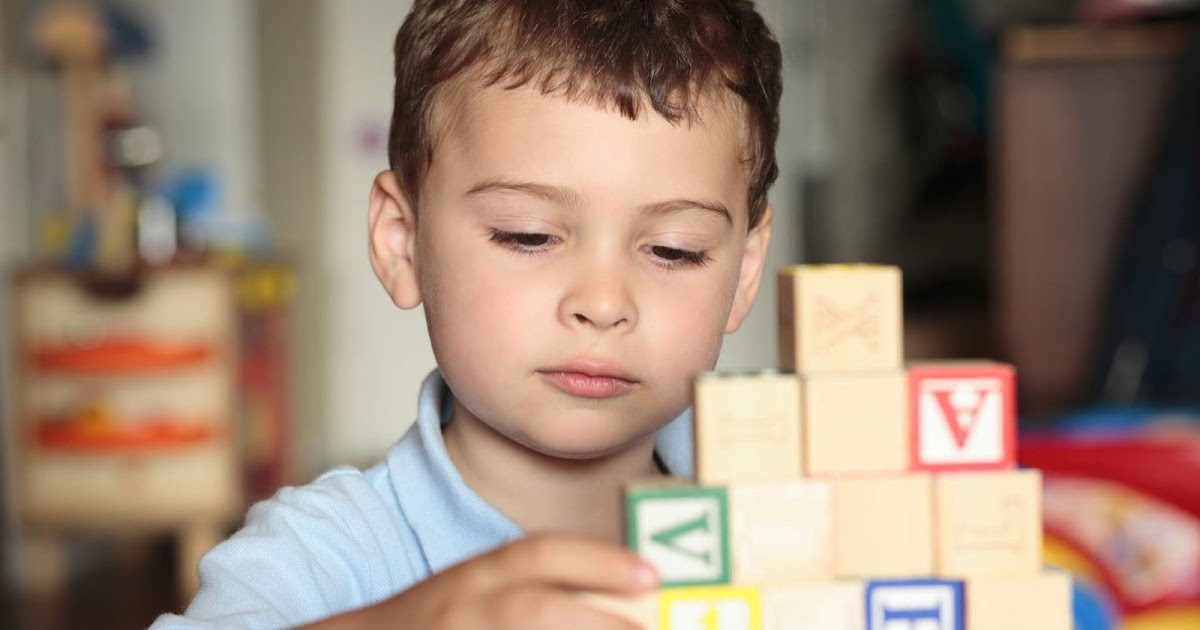18 Unmistakable Clues Your Child Could Be on the Autism Spectrum
Autism is a unique way of experiencing the world, shaping how individuals process information, interact with others, and navigate daily life. As a neurodevelopmental condition, autism presents differently in every person, making it crucial for parents and caregivers to recognize the diverse signs that may indicate a child is on the spectrum. While traditional portrayals of autism often focus on only a few traits, the reality is much broader—many children with autism are undiagnosed for years simply because their symptoms don’t fit the most commonly recognized patterns. Early identification can make a world of difference, providing children with the support, resources, and understanding they need to thrive. That’s why we’ve expanded our list to 18 unmistakable clues that could indicate your child is on the autism spectrum. By becoming familiar with these signs, parents and caregivers can foster an environment where children feel understood, valued, and empowered to embrace their own unique way of thinking and experiencing life.
1. Issues With Language Development

Children with autism or others on the spectrum typically don't develop language with the same markers neurotypical children do. There are certain milestones neurotypical children tend to meet at certain ages. If a child doesn't meet these milestones, they may be autistic. Children usually begin babbling and cooing by twelve months old, and they begin saying singular words by sixteen months. By two years old, most children can say two-word phrases. Children who don't meet these milestones may be autistic, or they may have other developmental issues that make learning language difficult. About twenty-five percent of children with autism are nonverbal, which means they don't speak at all. Some nonverbal children can communicate in other ways like pointing or sign language. There haven't been many studies regarding how autism influences the development of language over time, though researchers have observed some children with autism use vocabulary far more advanced than their peers, which indicates a high level of intelligence and information retention. In the past, autism that presented without significant language impairment was diagnosed as Asperger's syndrome, but nowadays everything is covered under the same spectrum.
2. Limited Eye Contact

Limited eye contact is one of many behavioral cues that indicate an individual may have autism. That said, not making eye contact isn't always an indication of autism. Lack of eye contact also doesn't mean the individual isn't paying attention to their environment or engaged with the world around them. The reasoning behind limited eye contact hasn't been conclusively proven, but individuals with autism have described various reasons. It may be difficult for the affected individual to focus on another's eyes and spoken words simultaneously. It's also possible eye contact is a learned social behavior children with autism don't pick up on. Many children and adults with this condition feel like they gather more about someone by watching their hands or eyes. Eye contact also has the potential to be an overwhelming and intense experience that causes sensory issues. For all of these reasons, individuals with autism may prefer not to make eye contact, but that doesn't mean they aren't interested in communicating.
3. Struggles With Understanding Feelings Of Others

Individuals with autism or who are considered to be on the spectrum can struggle with understanding the feelings of others. However, there is a misconception that all of these individuals are unable to recognize feelings or read emotions. This is not true. About fifty percent of individuals with autism also have alexithymia, which is a difficulty with identifying the emotions they're feeling. One study indicated individuals with autism and alexithymia were less likely to feel empathy for others. By contrast, individuals who had autism without alexithymia had typical levels of empathy for others. It's also worth noting just because someone doesn't understand another's emotions does not mean they don't care about the other's feelings. Some individuals with autism say they need to teach themselves to read certain body cues and facial expressions others may interpret instinctively. Some individuals with autism also say it's difficult for them to understand what's upsetting someone else without having it specifically explained. It's possible for individuals with autism to understand and care about the feelings of others, but communicating those feelings often needs to be more blunt than neurotypical individuals are used to.
4. Exhibits Repetitive Behaviors

One common sign of autism is repetitive behaviors. These behaviors might involve hand flapping, spinning, rocking, or any other physical motions. The repetition of these motions can help soothe individuals who are having sensory issues or experiencing an emotional overload. However, repetitive behaviors aren't always a sign of distress. 'Stimming' involves repetitive or unusual motions that can express joy or pleasure. In the past, many treatments for autism aimed to reduce or eliminate repetitive motions, though this is more harmful than helpful. Forcing children to sit still when they want to move can lead to severe stress and even trauma. There's nothing wrong with using repetitive motion. The only types of repetitive behaviors that should be stopped are ones that cause harm, like banging one's head or biting. Rather than trying to stop these behaviors, it's better to encourage them as methods of self-expression.
5. Upset By Changes In Routines

Children and adults with autism can both become upset by changes in routines. Many affected individuals have specific rituals and routines they develop. These can be soothing and help them cope with heightened levels of anxiety, which many individuals with autism experience due to sensory issues and trouble with social functioning. The DSM-5 outlines multiple ways this can occur. Individuals might need to eat the same foods or take the same routes each day, may experience rigid patterns in thinking, may have distress when small things are changed, or have trouble transitioning into a new place or period of life. Preventing these rituals can lead to extreme levels of distress, which compounds with any anxiety that already exists. The routines can become a problem if they become so excessive that they interfere with an individual's daily life. Any routine that reaches a point where it causes distress rather than helping is an indication of a problem.
6. Monotone Speech

Individuals with autism can sometimes struggle to speak with inflection and emotion. When neurotypical people communicate, the words themselves are just part of the puzzle. The tone of voice and accompanying body language make up a huge percentage of the meaning. Individuals dealing with autism have trouble deciphering the meaning of tonal changes instinctively, though many adults with autism say they learned to interpret them as children by paying close attention. This is part of why those with autism sometimes have trouble detecting sarcasm or double meanings. When these individuals speak, the lack of tonal inflection may be reflected in their speech. This doesn't mean they don't have any feelings or aren't trying to communicate. Rather, it simply means communicating meaning through pitch and inflection isn't their most comfortable form of communication. It's more helpful for those around them to understand this than for them to be forced to adapt to a communication style that feels unnatural.
7. Abnormal Facial Expressions

Abnormal facial expressions can also be a sign of autism. Inexplicable expressions can also occur in a variety of other neurodivergent conditions including attention deficit hyperactivity disorder and certain psychotic disorders. Neurotypical people sometimes mistakenly think the abnormal facial expressions are a sign of disinterest, inappropriate emotional responses, or predatory behavior. But this is not true at all. Like with inflection in speech, individuals with autism sometimes struggle to use facial expressions to communicate. They may have flat and removed expressions, or they might seem excited or unhappy about news that doesn't warrant that reaction. Many individuals with autism talk about how they practiced mimicking other people's facial expressions as children so they'd stop seeming weird. If a child has a strange facial expression for a conversation, it's possible they're trying to imitate their neurotypical peers for acceptance. Individuals with autism should never be demonized for not emoting the way neurotypical people do, and should be allowed to express feelings and thoughts in the way that feels most comfortable to them.
8. Extreme Interest In Specific Things

Autism and attention deficit hyperactivity disorder are two neurodivergent conditions that share many traits. In the past, they were actually considered to exist on the same spectrum. One of the things that's common in both conditions is a phenomenon called 'hyperfocus.' In it, an affected individual may become extremely interested in specific things. They will then develop a singleminded focus on their current interest, learning everything they can about it and creating things related to it and talking to anyone who will listen about it. When an individual with autism is interested in something, studies indicate they have a significantly better ability to concentrate and absorb information than their average neurotypical counterparts. The flip side of this, though, is it will often be impossible for them to focus on anything other than their interest. This can be frustrating to the individuals around them; if they can focus on one thing, it's hard to understand why they can't just switch tasks and focus on the other. But for an individual with autism who is hyperfocusing, attempting to think about other things isn't possible since their brain is entirely occupied.
9. Not Fond Of Being Touched Or Comforted

One classic sign of autism is a child who's not fond of being touched or comforted. Parents often instinctively try to comfort their children by hugging them, petting their hair, kissing them, and squeezing them. But this kind of touch, especially if it's unexpected or unasked for, can feel more like an assault than comfort to an individual with autism. Parents might want to teach their children to tolerate their touch. But even if a child with autism is trained not to react to being touched in ways they don't like, they still won't like them. They'll just learn not to express that. If someone actually wants to comfort a child or other individual with autism, they need to take the time to learn about how they feel about touch. They should practice asking permission to touch and hug them, and back off if they're told no. And if they don't like hugs and prefer to be comforted through words or contactless company, they need to adapt their communication to fit them. Not the other way around.
10. Sleep Disturbances

Sleep disturbances are a little-discussed, but very prevalent, issue for individuals with autism. There are several potential reasons for this including sensory issues, racing thoughts, emotional discomfort, and repetitive physical behaviors that make settling down difficult. Despite the vast prevalence of sleep issues in individuals with autism, researchers are still compiling evidence about it. Studies indicate anywhere from forty-four to eighty-six percent of children with autism experience serious sleep issues. Only ten to sixteen percent of neurotypical children experience these problems. The wide range in individuals with autism is because different studies defined serious sleep issues in different ways. Individuals with insomnia have to take eleven more minutes than a neurotypical person to fall asleep, on average. Many also experience frequent nighttime wakings and sleep that doesn't feel restorative.
11. Difficulty Understanding Figurative Language

Many children with autism struggle with understanding non-literal language, such as idioms, sarcasm, or metaphors. Phrases like "it’s raining cats and dogs" or "spill the beans" may be taken literally, causing confusion. This difficulty stems from the fact that individuals with autism often process language in a highly logical and straightforward manner. While neurotypical children naturally pick up on contextual clues that indicate when language is being used figuratively, autistic children may require explicit explanations to grasp these nuances. As they grow older, many individuals with autism develop strategies to interpret sarcasm and figurative language, but it may never come as naturally as it does for their peers.
12. Highly Sensitive to Certain Sounds or Smells

Sensory sensitivities are a common but often overlooked sign of autism. Many children on the spectrum have heightened or diminished responses to sensory input, such as loud noises, bright lights, strong smells, or certain textures. A child with autism may cover their ears at sounds that seem ordinary to others, such as the hum of a refrigerator or the flushing of a toilet. They might gag or refuse to eat certain foods due to their texture or smell, even if they have no history of food allergies. These sensory challenges can be overwhelming and may lead to meltdowns or avoidance behaviors when exposed to overstimulating environments.
13. Unusual Gait or Posture

Children with autism sometimes display differences in the way they move, walk, or carry themselves. They may have an awkward gait, standing or walking on their tiptoes, or holding their body in stiff or unusual postures. Some children may struggle with coordination and balance, making activities like running, jumping, or climbing more challenging. These motor differences can be subtle and might not be noticed until a child struggles with activities that require fine or gross motor skills, such as using utensils, tying shoelaces, or riding a bike. While these issues don’t affect all children with autism, they are important clues to watch for.
14. Difficulty With Transitions

Many children with autism have a hard time shifting from one activity to another, especially if they are deeply focused on something they enjoy. Sudden changes in routine, like transitioning from playtime to bedtime, can cause distress, leading to anxiety or meltdowns. Even seemingly small transitions, like leaving the house to go to school, can feel overwhelming. Providing visual schedules, countdowns, or verbal reminders can help ease the transition process. Parents and caregivers may also notice that their child thrives on predictability and becomes visibly anxious or upset when plans change unexpectedly.
15. Intense Focus on Specific Objects or Topics

One of the most defining characteristics of autism is a deep and intense interest in specific topics. While many children develop strong interests, autistic children often hyperfocus on a particular subject to an extraordinary degree. They might memorize intricate details about dinosaurs, space, trains, or a specific TV show, and spend hours talking about or engaging with that interest. This deep focus can be both a strength and a challenge—while it allows autistic individuals to become experts in their field of interest, it can also make it difficult for them to shift attention to other activities or participate in conversations outside their area of passion.
16. Prefers Parallel Play Over Group Interaction

Many autistic children prefer parallel play—playing alongside other children rather than engaging directly with them. While neurotypical children typically move from parallel play to interactive play by preschool age, autistic children may continue preferring solitary or side-by-side play well into childhood. They might show little interest in joining group games, struggle with turn-taking, or become overwhelmed in social settings. This preference for independent play does not necessarily indicate that they don’t want friends; rather, they may simply interact in a way that feels natural and comfortable to them. With the right support, many autistic children learn social skills at their own pace.
17. Unusual Sleeping Patterns

Sleep disturbances are common in children with autism, with many experiencing difficulty falling asleep, frequent night wakings, or irregular sleep cycles. They may struggle with feeling comfortable in bed, have trouble shutting off their thoughts, or be overly sensitive to environmental factors like noise, temperature, or the feel of blankets. Some children develop rigid bedtime rituals that must be followed precisely, or they may wake up at the same time every night. Poor sleep can affect mood, concentration, and overall well-being, making it important for parents to seek strategies or professional advice to help their child establish better sleep habits.
18. Strong Preference for Predictability and Repetition

Many children with autism find great comfort in routines, repetition, and predictability. They may insist on eating the same foods, watching the same movies repeatedly, or following a strict daily routine. Even slight deviations—such as a different route to school or a change in their usual seating arrangement—can cause distress. This need for predictability is not about being inflexible but rather a way to create a sense of security in an often unpredictable world. Understanding and respecting these needs can help autistic children feel safe and supported while gradually introducing them to coping strategies for unexpected changes.
Understanding and Supporting Your Child’s Unique Journey

Recognizing the early signs of autism is the first step toward providing the right support, resources, and understanding that a child needs to thrive. While autism presents challenges, it also comes with unique strengths—many autistic individuals have exceptional memories, deep passions, creative thinking skills, and strong attention to detail. The key to helping a child with autism flourish is embracing their differences, advocating for their needs, and fostering an environment where they feel accepted and valued. Early diagnosis and intervention can be life-changing, opening doors to therapies, educational support, and strategies that empower autistic children to navigate the world in their own way. If you suspect your child may be on the spectrum, seeking professional guidance can provide clarity and direction. Remember, autism is not something to be “fixed” but rather a different way of experiencing and interacting with the world. By understanding and celebrating neurodiversity, we can help every child reach their full potential.